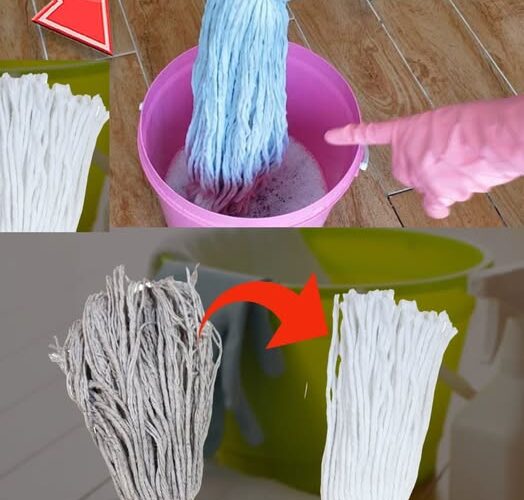ADVERTISEMENT
The salt acts as a natural abrasive that can help break down tough grime while also freshening up the fibers.
5. Essential Oils for a Fresh Scent
For that final touch, add a few drops of essential oils to your mop to give it a pleasant scent. Oils like lavender, tea tree, or eucalyptus not only smell great but also offer antibacterial and antifungal properties.
What You’ll Need:
- 5-10 drops of your favorite essential oil (e.g., lavender, eucalyptus, tea tree)
How to Do It:
- After cleaning your mop with any of the above remedies, add a few drops of your chosen essential oil to a clean, damp mop head.
- Gently massage the oil into the fibers for a fresh, fragrant finish.
Essential oils also add an extra layer of freshness to your mop, making it smell inviting and clean for your next round of cleaning.
How to Maintain Your Mop Between Cleanings
Now that your mop is fresh and clean, here are a few tips to help keep it in good condition:
- Rinse After Each Use: After using your mop, rinse the mop head thoroughly to remove any debris or cleaning solution left behind.
- Air Dry: Always air dry your mop after each use. This helps prevent mold and mildew buildup.
- Wash Regularly: Wash your mop head every few weeks, depending on how frequently you use it. Regular cleaning will prevent odors and bacteria from building up.
- Replace Mop Heads: If your mop head is too worn or damaged, it’s time to replace it. Keeping the mop in good condition is key to maximizing its efficiency.
Conclusion: Save Money and Clean Effectively with Home Remedies
You don’t need to buy a new mop every time yours starts to show signs of wear. By using simple, effective home remedies, you can renew your mop and extend its lifespan. Whether you choose vinegar, baking soda, hydrogen peroxide, or other natural ingredients, you can clean your mop thoroughly and save money in the process.
With these simple solutions, you’ll not only have a cleaner mop but also a cleaner home, all while avoiding harsh chemicals. So, the next time your mop needs a refresh, turn to these easy and eco-friendly remedies to get the job done!
Would you like more tips on cleaning or home remedies? Feel free to ask!
